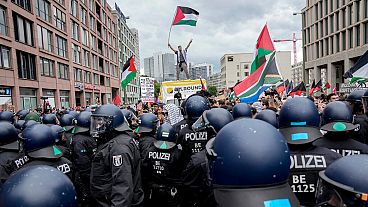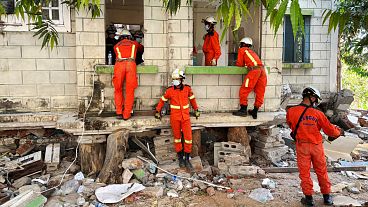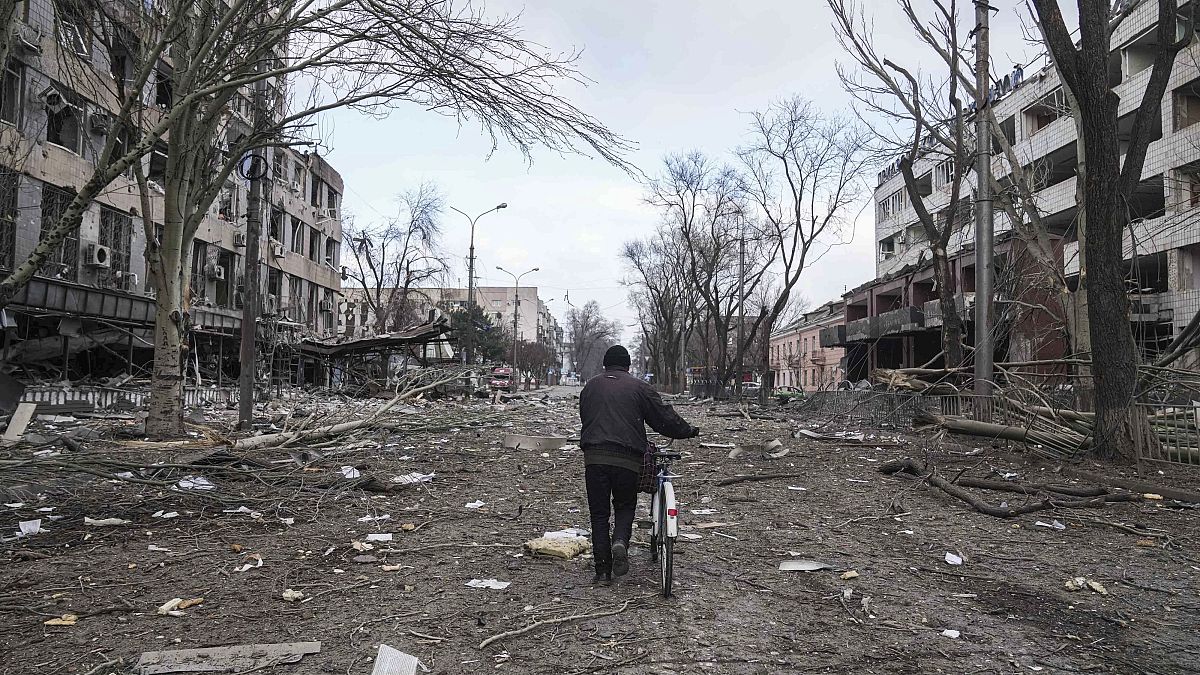Mariupol has suffered some of the worst physical destruction of any other place in Ukraine during the full-scale invasion. But the number of fatalities in the now Moscow-controlled territory is still unknown.
Nearly two years after Russian troops besieged the Donetsk city of Mariupol the number of fatalities remains hard to estimate as satellite images show growing mass graves in the outskirts of the city.
In a new report released on Thursday following a two-year investigation conducted with Ukrainian human rights organisation Truth Hounds, Human Rights Watch put the total number of deaths in Mariupol between March 2022 and February 2023 at more than 10,000.
The two NGOs used satellite imagery and the analysis of archival material to reach their estimate but warned that the full extent of the amount of people killed, injured, and are still missing is unknown.
Russian forces besieged the city in the first weeks of the full-scale invasion. By the time the Russian army had taken almost full control of the city in April 2022, thousands of civilians were dead, and most of the city’s infrastructure was destroyed.
Under Moscow occupation, evidence of crimes committed by Russian forces “have likely disappeared or been destroyed,” the report says. Foreign investigators and judicial officers are not allowed to examine the remains of the city. Residents who witnessed the attacks are not likely to talk over fears of punishment.
Mariupol “has changed profoundly since the end of the fighting in 2022,” the report adds. Moscow has begun its project to rebuild the city by 2025, which includes plans to remove any signs of Ukrainian culture. A Russian school curriculum is now taught at schools, and residents are required to obtain Russian passports to gain access to jobs, welfare payments, and public health care.
People in Mariupol must undergo a screening procedure to obtain a pass if they want to leave the city. This process is in place in all current Russian-occupied regions. Yet, some who seem to have pro-Ukranian ties or links to Ukraine’s Armed Forces are detained during the process.
The city of Mariupol was among the first targets of Russia’s full-scale invasion that started on 24 February 2022. It was key for Moscow as taking over Mariupol meant they could create a corridor between the Crimea region— occupied by Russia since 2014— and Russian territory. It would also mean Moscow would control more than 80 percent of the coastline of Ukraine’s Azov Sea and the city’s port, which is crucial for Ukraine’s exports.
As Russian forces first sought to take control of the city, about 450,000 people spent about seven weeks trapped in shelters without access to basic services or information on what was happening. Residents hid in collective shelters in hospitals, non-residential buildings, and even in the basements of their own homes. There was no way to bring food into the city, so they had to survive with what they had stored before the invasion and what volunteers provided.
For the first half of March, Mariupol residents could not flee the city as Russian troops had blocked exit routes. Ukrainian officials had sent about 100 buses to Mariupol’s bus depot to evacuate civilians, but the depot was targeted by Russian shelling.
Many people were killed and injured during attacks that targeted the buildings where they were sheltering. People who were injured struggled to reach the city’s 19 hospitals which were all damaged by the end of the battle, according to an assessment made by Human Rights Watch.
The city suffered some of the worst physical destruction of any other place in Ukraine during the full-scale invasion.
“Mariupol today would be barely recognisable to many of its former residents,” the report says. An analysis conducted by Human Rights Watch found that by mid-May 2022, 93 percent of the 477 apartment buildings in the city centre had been damaged and that 86 of the city’s 89 educational facilities had been targeted.
The report identifies Russian commanders, including President Vladimir Putin, who are allegedly responsible for committing war crimes during the invasion of Mariupol. It calls for them to be investigated and prosecuted "for their alleged role in serious violations committed during the Russian forces’ assault." Defence Minister Sergei Shoigu and Chief of the General Staff of the Armed Forces Valery Gerasimov are also considered responsible for the unlawful attacks.













